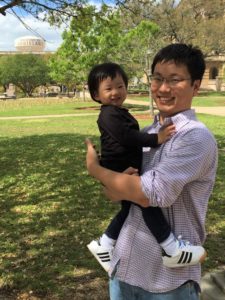Hamidreza Sharifan
Hamidreza Sharifan received his Master’s degree in environment and process engineering from the University of Stuttgart in Germany. He spent a year of research at two marine research institutes of Alfred Wagener research institute of marine and polar in Germany and Royal Netherland Institute for Sea Research in the Netherlands.
He has published several articles in various journals and presented his research at several international conferences on environmental science and technologies. Currently, he is working on the interaction of the coexistence of engineered nanoparticles and heavy metals with agro-plants at Texas A & M University. under supervisory of professor Xingmao Ma.
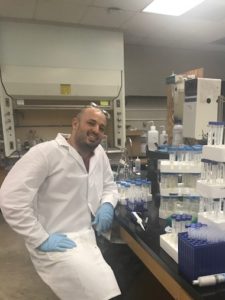
Xiaoxuan Wang
Xiaoxuan Wang is currently pursuing a Master’s of Science degree in environmental engineering under the advising of Dr. Ma. She previously obtained her Bachelors in environmental engineering from Xi’an Jiaotong University in China.
Xiaoxuan’s graduate research focuses on the effects of different concentrations of nitrate and perchlorate on arsenic speciation in rice rhizosphere and plant tissues, and the interactions of arsenic with surrounding redox active elements in greenhouse investigations. Her undergraduate research focused on the effects of an ultrasonic field on the characteristics of lead dioxide electrodes and electro-catalysis degradation of desorbed concentrated organic solution with a titanium-based PbO2 anode.
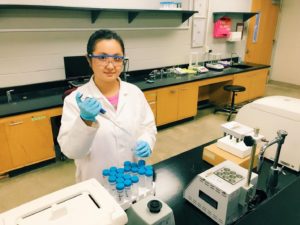
Shifan Li
Shifan Li is seeking his M.Sc. degree in Environmental Engineering. Since 2015, he has been actively involved in a bioremediation research projects under supervisory of Dr. Ma. Recently, he developed his expertise and touched a new field of research in adsorption efficiency and underlying mechanism in nanostructure composites. Currently, he is working on the adsorption of benzoic acid onto carbon nanotubes, including the different class of carbon nanotubes.
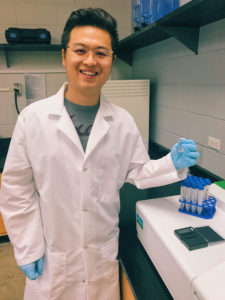
Lorenzo Rossi
Lorenzo Rossi is a former post-doc of Dr. Ma’s Laboratory and, currently he is a post-doc in Dr. Burken’s Laboratory at Missouri S&T.
He is actually involved in several research projects focusing on how cultivated plants react to engineered nanoparticles, heavy metals and other environmental stressors (i.e., salinity and drought). Particularly, he is investigating how different species modify their physiology and anatomy in response to emerging contaminants. In fact, the rapid advancement of nanotechnology has been accompanied by increasing environmental contamination by engineered nanoparticles (ENPs), with agricultural soil as an important sink. Meanwhile, several abiotic stresses also affect plant uptake of ENPs. Therefore, understanding the interactions of co-present ENPs and heavy metals, drought or salinity (common sources of abiotic stress) is critical to gain insights into the accumulation of these contaminants in the ecosystem. Results revealed that cerium oxide can be transmitted through several of Brassica rapa (Ma et al., 2015 Env Science & Tech; Maet al., 2016 NanoImpact), leading to severe oxidative stress on cultivated plants and overall on the ecosystem. Moreover, he demonstrated that cerium oxide nanoparticles can alleviate the salt stress in canola by enhancing photosynthesis mechanism (Rossi et al., 2016 Env. Pollution), showing a potential beneficial effect of ENPs on the environment. However, he also revealed that heavy metals and cerium oxide nanoparticles led to anatomical and physiological changes in root anatomy and plant physiology in several cultivated species (Rossi et al., 2017 Environmental Pollution; Cao et al., 2017 Environmental Science: Nano), altering the normal root structure architecture and the soil-organism interactions.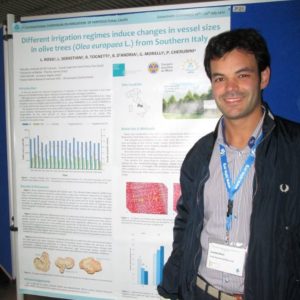
Weilan Zhang
Weilan Zhang is a former Ph.D. student of Prof. Ma and currently he is a postdoctoral fellow in Prof. Irene Lo’s Laboratory at the Hong Kong University of Science and Technology. Weilan’s Ph.D. research focused on the interactions between engineered nanoparticles (ENPs) and plants, as well as the fate and transport of ENPs in soil. Weilan comprehensively and quantitatively assessed the potential risks of cerium oxide nanoparticles (CeO2NPs) to a belowground vegetable (radish) in both hydroponic and soil systems. The results demonstrate that the surface charge of CeO2NPs, the aging process of CeO2NPs in soil, and soil properties, including the soil texture, mineral content, and organic matter content, are all important factors governing the fractionation of CeO2NPs in soil and subsequent bioavailability to radish.
